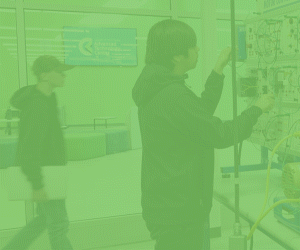Emerging Technologies Require a Modern Technical Environment
Colleges and universities increasingly are adding high-tech tools to their technology inventories. Quantum computing is one field that is growing rapidly, and research institutions are taking note. Rensselaer Polytechnic Institute is the first higher ed institution to house IBM’s quantum computer, making this type of research available to students and faculty alike. To support the high-performance computer, the school bolstered its uninterruptable power supply and broadband network.
Smart buildings are also taking hold in higher education, with institutions leaning into IoT technologies that monitor and optimize energy and water consumption to save money and environmental resources. At Case Western Reserve University, data from these sustainable buildings is used as a teaching tool for students. “This is real stuff, and it’s messy and noisy, so it has all of the things that they need to understand when they move from a classroom or laboratory into the real world,” says Professor Emeritus Kenneth Loparo.
All of these technologies require adequate resources, which is why a modern technical backbone is essential. More smart technologies mean more attack surfaces for cybercriminals, so a cyber resilience strategy is key to not only defending against potential attacks but also responding to inevitable security breaches. Modern networking is also essential to meet the added bandwidth demands of this additional technology, which is why schools such as Oral Roberts University are upgrading to Wi-Fi 6E to boost connectivity across campus.
As this evolution continues, preparing technology environments for today’s needs as well as for future expansion will be vital for institutions to continue to innovate.











